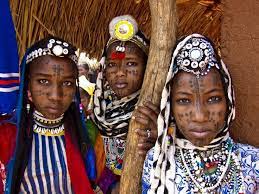This post discusses the cultural heritage of Central African republic from the culture of the people to the heritage sites that can be found therein.
Culture of the Central African Republic
The people of the Central African Republic are composed of several groups, mainly the Bwaka, Madjia, Baya, and Banda. The majority are farmers who grow export crops like coffee and cotton, plus local items like peppers, bananas, sweet potatoes, corn, yams, tobacco, peanuts, and rice. Though the area was overtaken by Muslims at some point in history, only 15 percent of the population is Muslim. About 25 percent of the population is Roman Catholic and 25 percent is Protestant. The remaining 35 have retained their indigenous religions.
Read: PREFECTURES OF THE CENTRAL AFRICAN REPUBLIC
People are generally family-oriented and hospitable. Most locals dress informally, but people living in Muslim areas dress modestly. Visitors are expected to respect local culture. Women are still segregated in some regions, especially in small towns and villages where they are limited to domestic chores like cooking and housekeeping.
Shaking hands is customary in the Central African Republic. Locals eat using their hands, so travelers are advised to eat with their hands out of respect. Just be sure to eat with the right, because the left is often used for the bathroom.
Music is a hodgepodge of influences, with sanza being the popular instrument. Genres like soukous, Afrobeat, pop music, and Western rock are all favorites, but the Pygmies have their own folk traditions.
The Central African Republic is the home of handmade crafts, from woven baskets, and mats, wooden utensils, pottery, handmade musical instruments. They are also good sculptors who create unique animal sculptures and are also good at painting. Modern painting includes watercolor painting and oil painting on canvas.
Heritage Sites in Central African Republic
There are 2 Heritage Sites in Central African Republic. All of these three sites are listed under the Cultural category.
- Manovo-Gounda St Floris National Park
- Sangha Trinational
Manovo-Gounda St Floris National Park
Manovo-Gounda St Floris National Park is a Heritage Site located in the Central African Republic. The park covers an area of over 1.7 million hectares and is home to a diverse range of wildlife, including elephants, lions, and cheetahs. The park is also known for its unique landscapes, which include savannahs, forests, and wetlands. Manovo-Gounda St Floris National Park is a crucial conservation area for many endangered species, and it is recognized as one of the most important protected areas in Central Africa.
Sangha Trinational
The Sangha Trinational is a Heritage Site located in the Congo Basin, and it spans the borders of Cameroon, the Central African Republic, and the Republic of Congo. This transboundary protected area encompasses three contiguous national parks. It is home to diverse flora and fauna, including several endangered species such as forest elephants, chimpanzees, and gorillas. The Sangha Trinational is recognized as one of Africa’s most important conservation areas. It is also culturally significant, home to several indigenous communities who have lived in the region for centuries.

